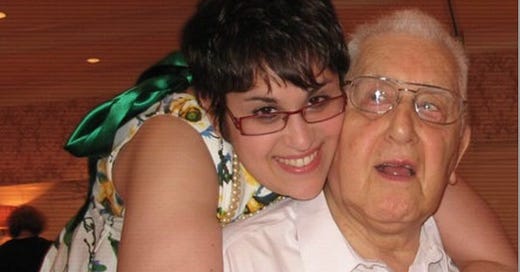Blue over Blue Zones: How to Be a Centenarian.
Do you remember the media splash over “blue zones,” places where people live to supercentenarian age while remaining in physically great shape?
The “discovery” of these zones, Dan Beuttner, turned the idea into books, diet plans, and all the rest to enrich himself and his supporters. The medical community initially embraced the blue zone too because what it advised; eating more vegetables, less processed food and sugar, doing daily exercise, and having strong social connections to buttress oneself in times of stress meets scientifically well-established standards of good diet and personal practice.
I embraced the blue zone lifestyle too to cope with stress caring for my wife with Lewy body dementia, and I have continued since. I even bought a Blue Zone cook book. I clearly feel physically and mentally better doing it.
I’m not self-righteous about what the blue zone way of living or try to convince others to do the same, but my little blue zone bubble has kept me mostly whole and healthy. Last week on my cruise, people I met told me I look far younger than my age. Cool.
However, I can’t discount that I might be just lucky and that little I do plays much of a role to get me to live over one hundred.
Say what?
The blue zone bubble has burst. They do not exist; not in Sardinia, Okinawa, Ikaria, or in enclaves of people elsewhere around the world.
A real demographic researcher, Saul Newman, determined that the clusters of supercentenarians Beuttner found derived from a combination of clerical errors in entering birth dates and families reporting dead relatives alive to continue to get their pensions. Long term longevity in the United States actually decreases by over eighty percent if only people with actual birth certificates is used in the analysis. In Italy, England, France, Okinawa, and Sardinia super longevity correlates with, of all things; poverty, higher crime rates, and bad health.
It’s pretty obvious that blue zones do not exist, which comes as no surprise to me in hindsight, because the originator of the idea is no more a scientist than Dr. Phil is a medical doctor— only a reporter on the make.
Still, I’m kind of “blue’ knowing blue zones don’t occur. Blue zones served as a “feel good fake fact.” Doing what blue zone books argue still remains good practice to live a healthier life. It just won’t likely lead to my living a longer life. Good health and doing all “the right things” can turn on a dime in my chronological age bracket. When I get episodic backaches, fatigue, insomnia, and gut problems common with the older set and then worry about my health and longevity, I’ll continue to channel my Dad who said, “Pain means you still are alive. Deal with it because the alternative remains unknown despite what any religion claims.”
Indeed.
Dad argued coping with stress comes from embracing discomfort while you try to control it, the stoic or Buddhist way. Doing what he suggests I find difficult, but it also has led me to more creativity, resilience, and clarity in making me confront life as it is, not as I wish.
Dad lived to a robust 98 by mostly eating an Eastern European diet of meat, potatoes, paprika, garlic and onions. There is much we do not know about individual health and well being, despite knowing what can help larger populations pretty well.
I like the Mediterranean diet and and the rest of what I do, and will continue it for the pleasure of it, whether it prolongs a healthier life nor not. I think it should from what I read from the NIH and Mayo Clinic anyway.
I decided to play a blues for this blue zone topic; Blue Monk, by Thelonius Monk. I recorded it in one take, since I’m tired from my trip still. Rough is ok for the blues. The picture at the top is of my Dad and my daughter Hannah. He was close to 98 when the picture was taken. Didn’t quite make 100. Maybe I will. :-)




